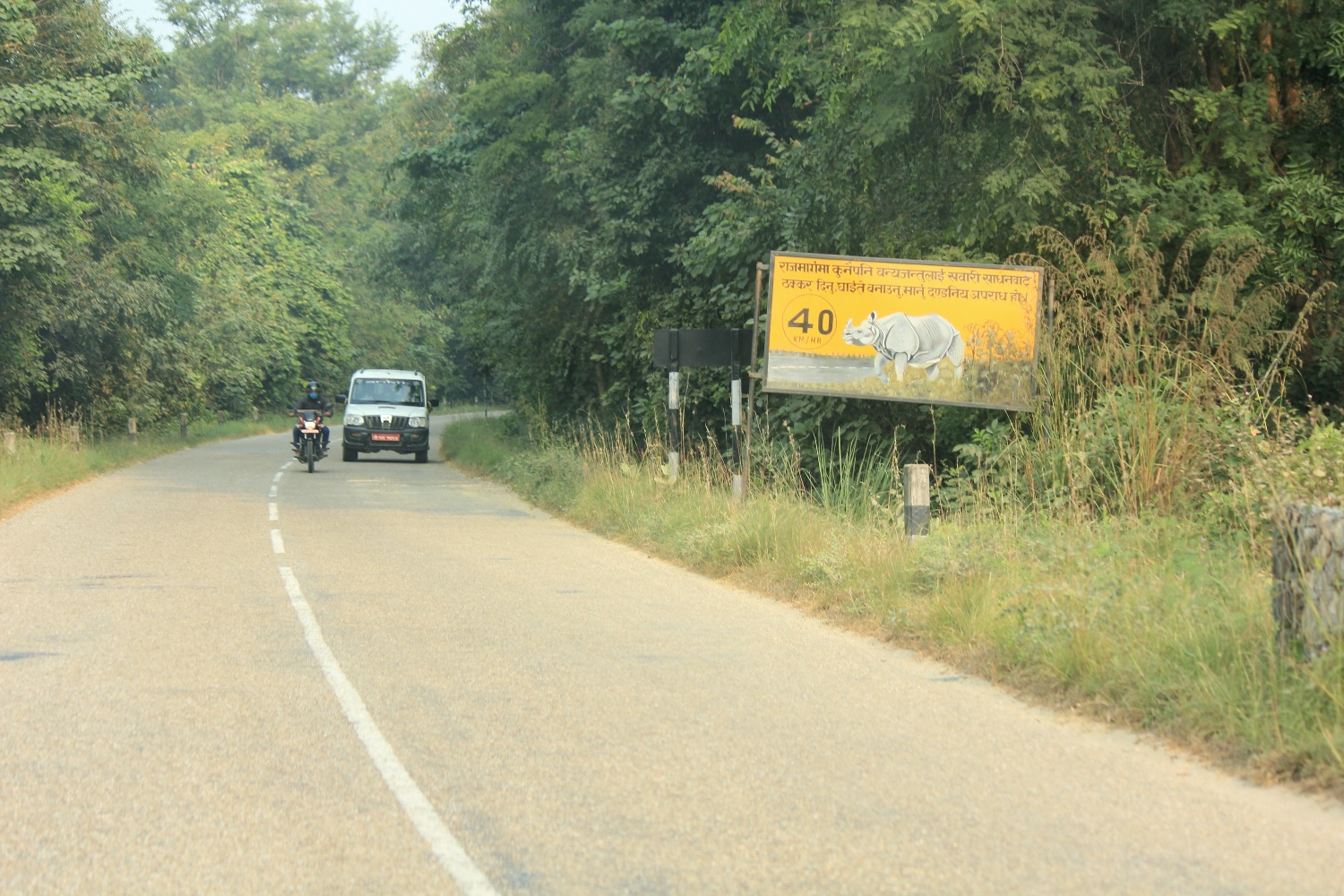Nepal needs wildlife friendly highways

On 2 January, the news of an adult tigress struck by a vehicle in Mahendra Highway made the rounds on social media. The photo of the striped big cat sprawled on the asphalt in a pool of blood touched many.
But there was also anger. The roadkill followed the killing by another tiger of a middle-aged woman on a motorcycle with her son in the same stretch of highway.
In December 2016, a speeding bus killed another tiger, and another in January 2019 left a tiger severely injured, the animal’s condition did not improve despite treatment and it died 13 months later.
These examples of harrowing road kill and human-animal conflict are on the rise in Nepal, thanks to new infrastructure including roads, irrigation canals, transmission lines and even railways crisscrossing nature reserves and national parks.
Case in point is the planned upgradation of the existing two-lane standard highway along the Pathlaiya- Hetauda, Hetauda-Narayanghat and Narayanghat-Butwal sections of Mahendra Highway, all of which will slice across protected areas including the Parsa National Park, Barandabhar Corridor and the buffer zone of Chitwan National Park.
The phenomenon even has an acronym, Vehicular Wildlife Collisions (VWC), and these are only bound to rise. Of the unnatural wildlife fatalities in Nepal in the last four years, with roadkill accounting for nearly half of all deaths. At least 29 deer, 24 wild boars and 22 monkeys were identified as roadkill just in 2019.
And despite reduced vehicular flow during the Covid-19 lockdown, there were 108 wildlife deaths in 2020 across highways that crisscross natural habitat and jungle corridors, and these do not include fatalities outside parks, which means many more deaths beyond protected areas go unrecorded.

VWCs don’t only harm animals, they put drivers and passengers of vehicles also in danger. We need a collective effort from highway authorities, planners, road security personnel, commuters and indigenous communities to tackle the mounting challenge.
The good news is that the government has advanced efforts to integrate innovative wildlife crossing structures across highways. One such intervention is a timecard system introduced to check vehicular speed at a wildlife hotspot along the Mahendra Highway that cuts through Bardia National Park. Since its installation in 2017, VWCs here have declined by half.
Similarly, the Department of Roads (DoR) is incorporating 55 small and large wildlife crossing structures, primarily underpasses, at critical locations along the Narayanghat-Butwal section of Mahendra Highway.
The DoR has also prioritised detailed biodiversity assessments in environmental studies for upgradation of highway sections. Plans to incorporate wildlife friendly crossing structures in two critical forest patches of ghe Barandabhar Corridor in Chitwan and Aadhabhar section in Parsa National Park are also in the pipeline, raising hopes for improved connectivity with safe wildlife dispersal.
Linear infrastructure, which fragment important biological areas (wildlife hotspots and corridors) have a direct relation to increased human wildlife conflicts.
When wildlife using a certain perimeter for crossing are obstructed by vehicular movement, they often get deflected to nearby settlement areas, evident in critical wildlife corridors Khata, Mohana and Basanta. So far this year, tigers have killed 10 people in the vicinity of Bardia National Park, Khata and Basanta Corridor.

Maintaining a safe corridor by integrating wildlife-friendly crossing zones inbuilt in linear infrastructure is the most sustainable and effective solution to ensure co-existence between humans and animals, particularly in areas where settlements are in close proximity to their habitat.
The Postal Highway Directorate is planning to integrate a dedicated wildlife crossing structure along 556 m of critical wildlife crossing zones within a 2km Khata forest corridor fragmented by the Postal Highway. Such wildlife friendly planning can provide safe passage for wildlife to roam across the separated habitats to prevent roadkill.
Meanwhile, the Ministry of Forest and Environment is in the final stage of endorsing its ‘Wildlife Friendly Linear Infrastructure Guideline’ which prioritises wildlife dispersal in developmental planning and implementation.
Recent tiger sightings at an altitude as high as 2,500m and 3,165m in Dadeldhura and Ilam are indicative of the need for habitat connectivity for wildlife dispersal, particularly between the East-West and North-South parts of the country.
Forging a harmonious relationship between humans and wildlife is critical for the survival of both species. If Nepal wants to become a middle-income country by 2030, it needs to balance the need for economic growth with ecological protection. This means ensuring that infrastructure and conservation go hand-in-hand.

Nepal is an international model for wildlife conservation. It is the first-tiger range country to double the number of its big cats and has dramatically reduced rhino poaching in recent years. It is important now more than ever, to address the challenges posed by linear infrastructure to sustain viable wildlife populations within protected areas and beyond.
With areas planned for infrastructure coinciding with key conservation landscape, it is critical that wildlife-friendly development is recognised as a major agenda nationally.
On the International Day for Biological Diversity on 22 May, let’s commit to developing a model for the world where a biodiverse country succeeds in achieving both development and conservation without laying waste its rich natural resources.
All we need for planners to find ways to build new infrastructure without irreversibly harming the country’s biodiversity, a developmental strategy that supplements conservation.
Pramod Neupane is a Senior Program Officer - Infrastructure, at WWF Nepal.




